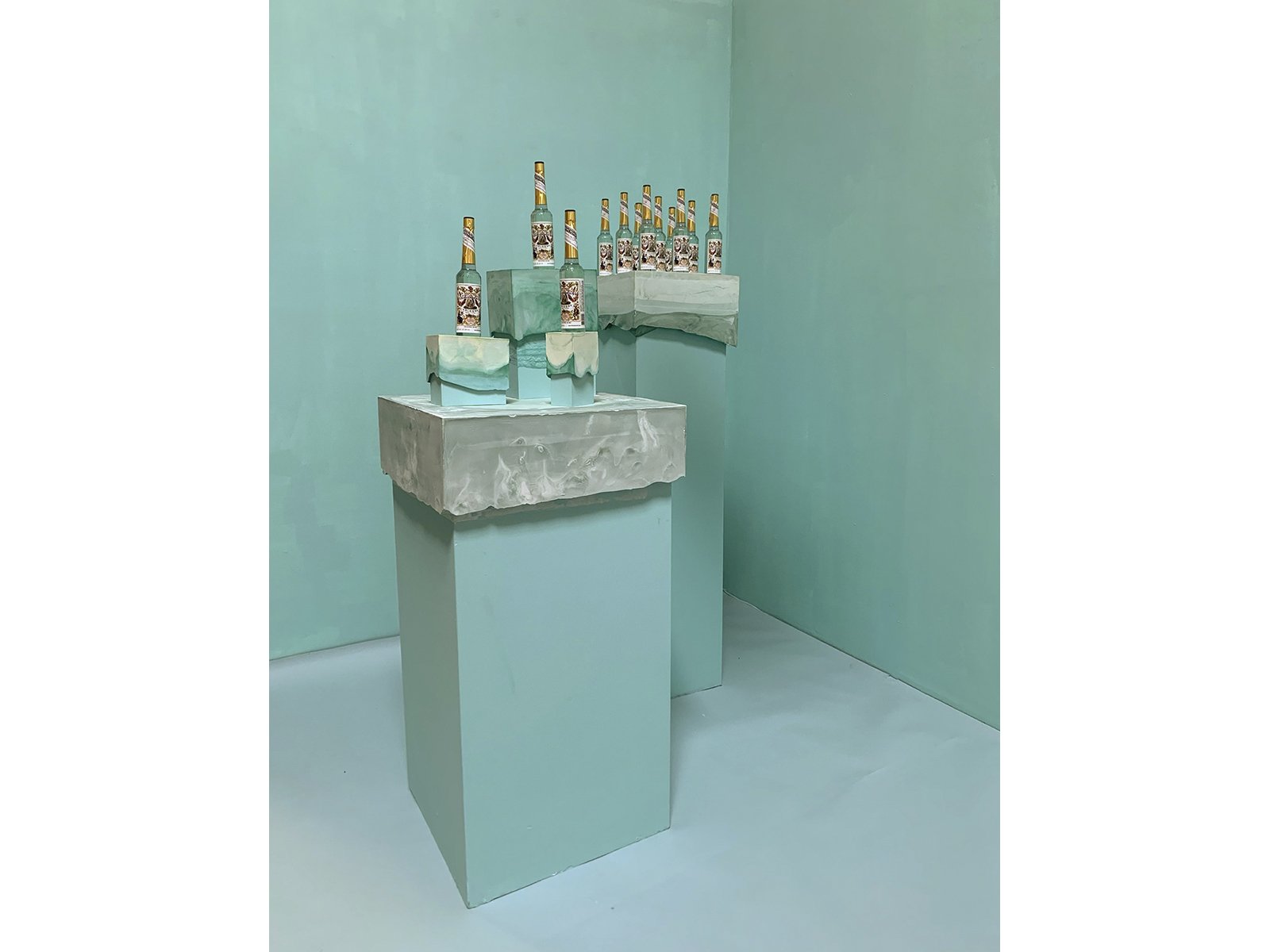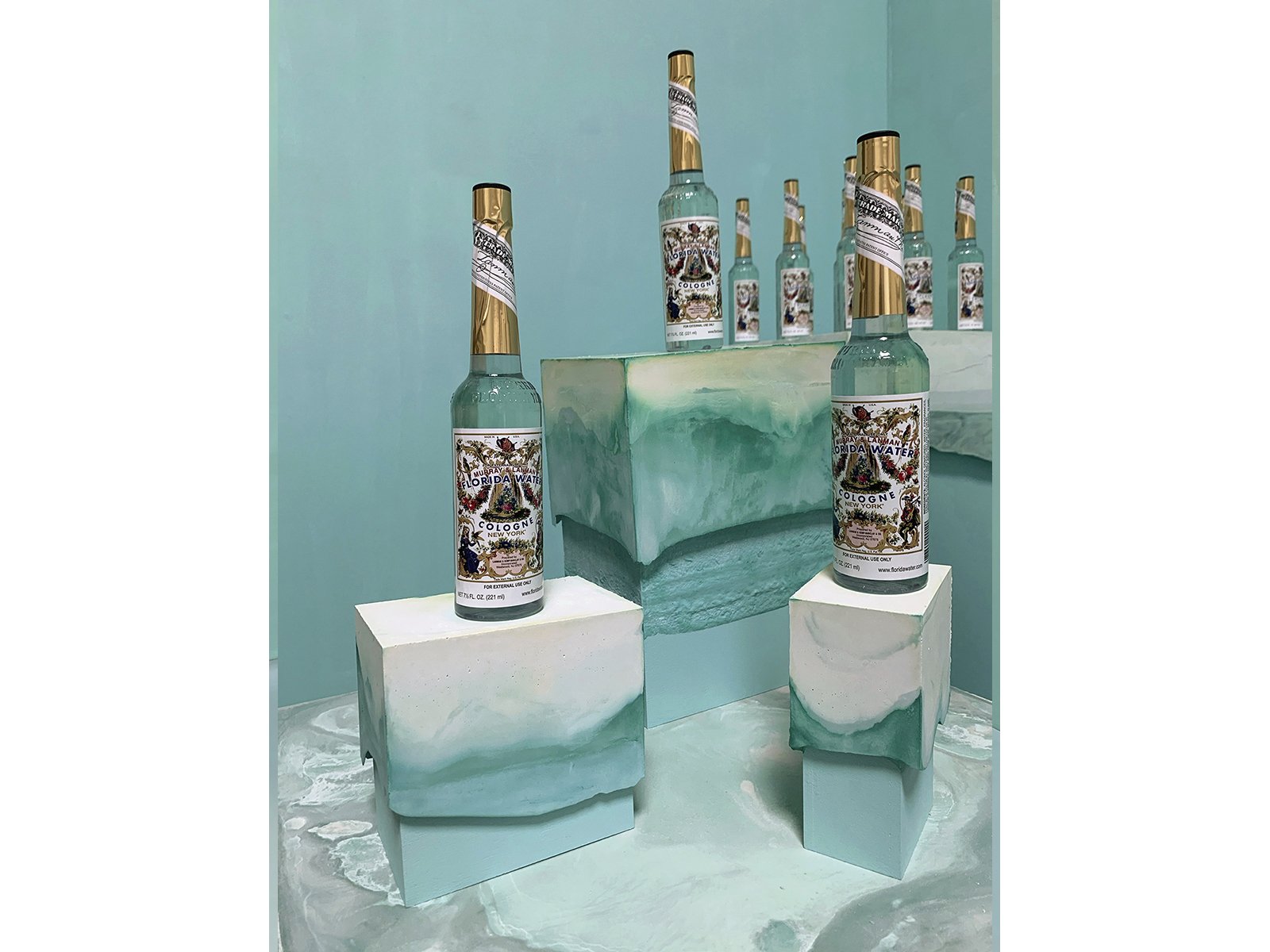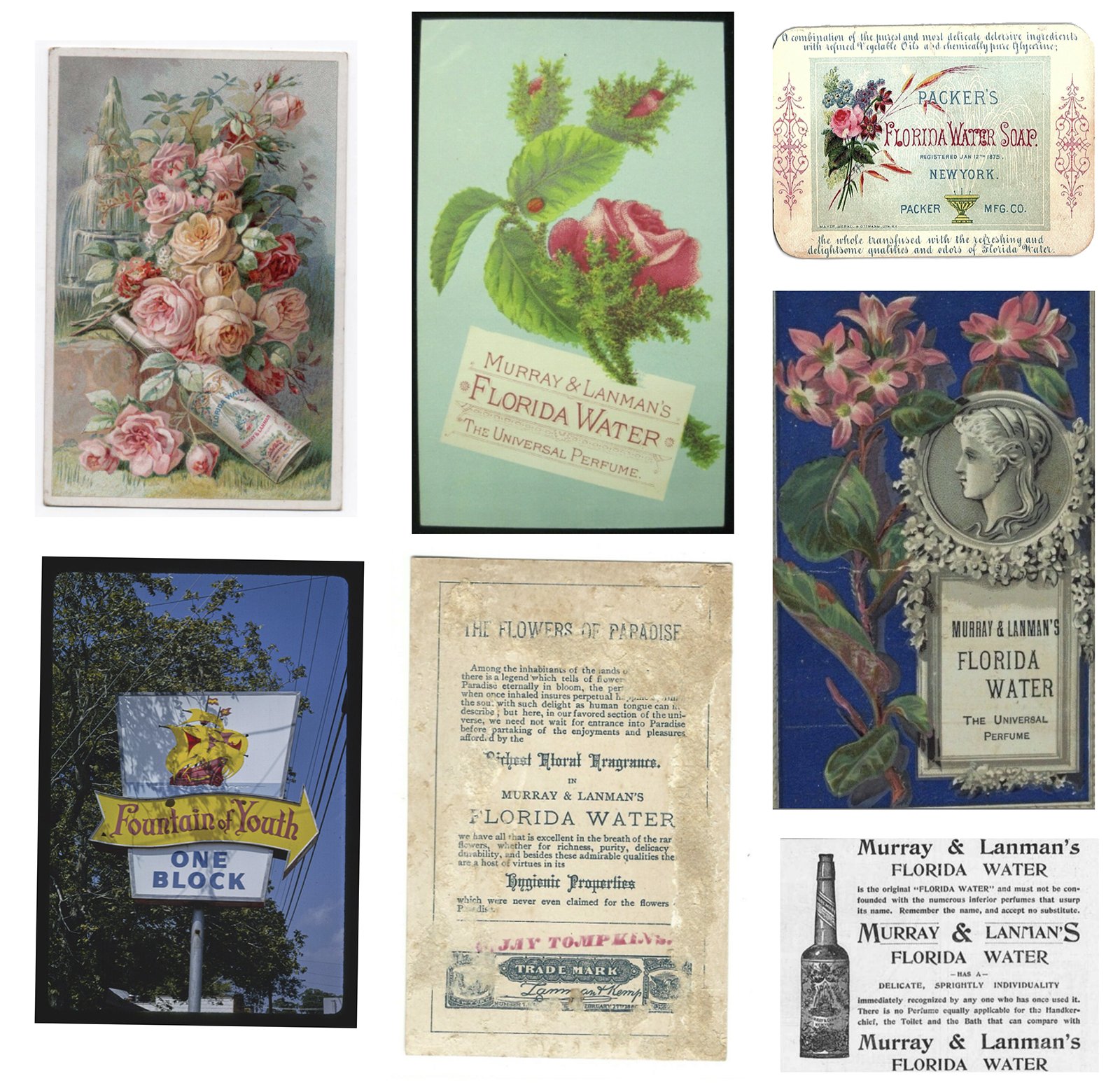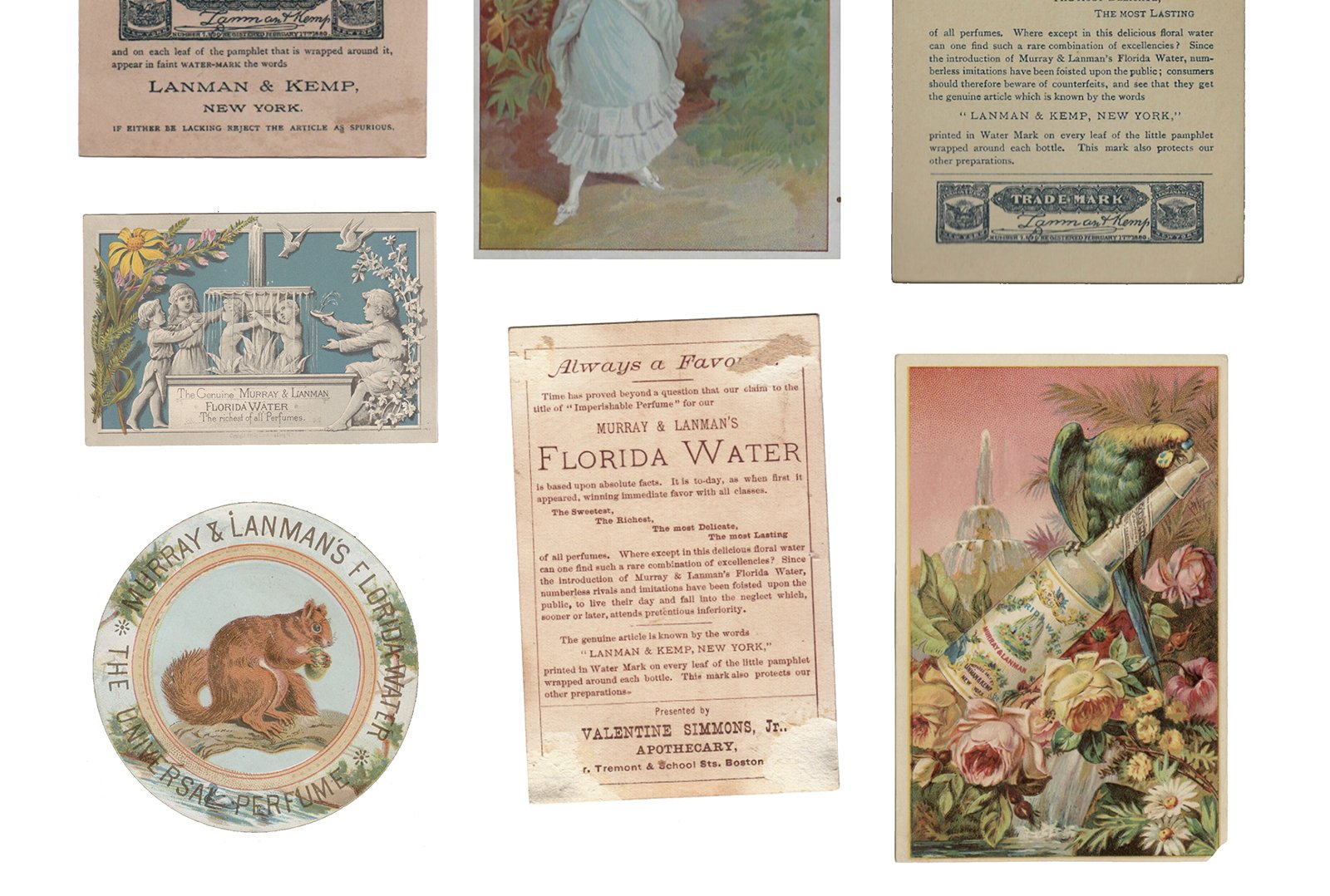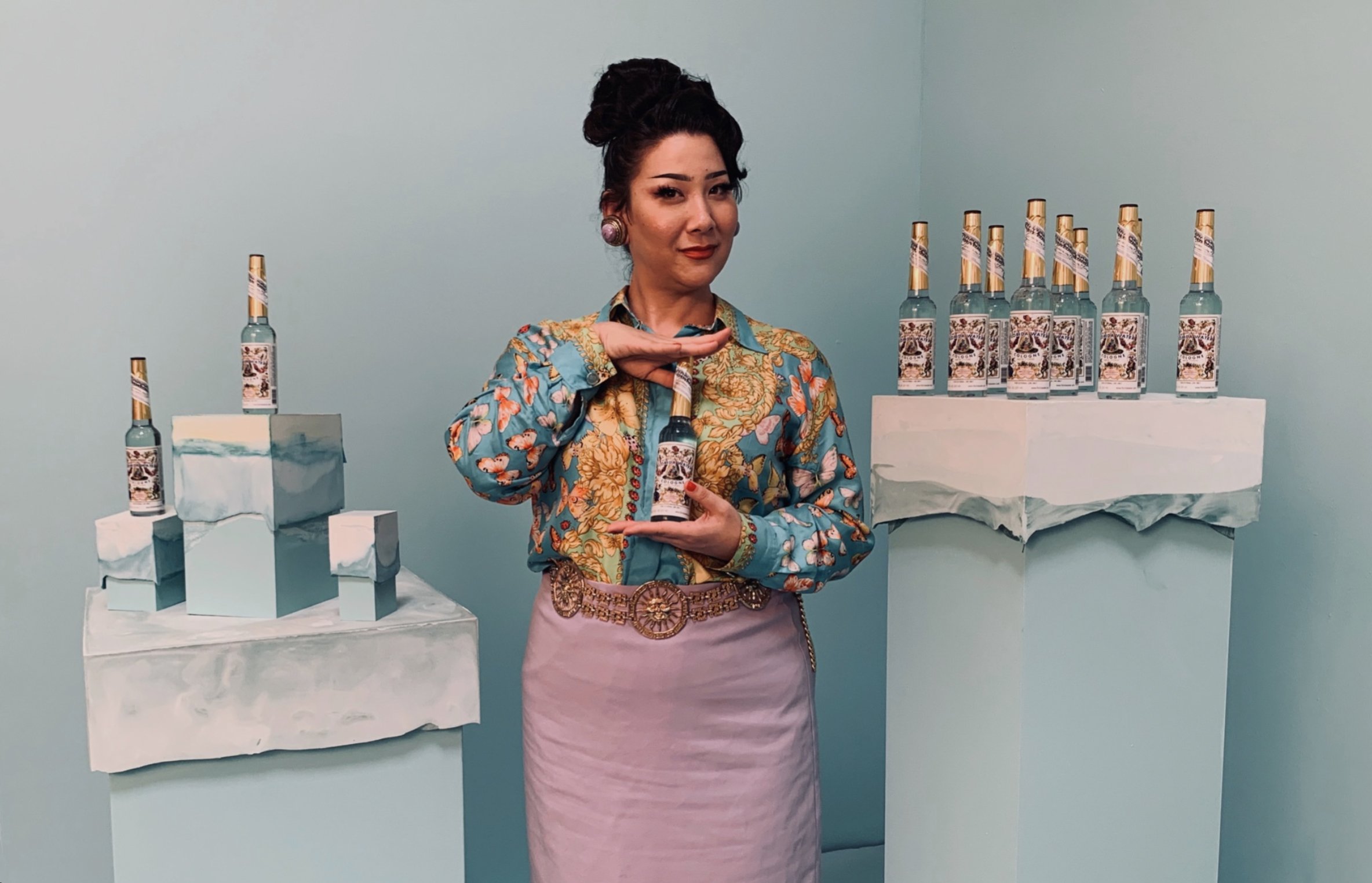
A Machine for Fiction
2020
video (2:31) + sculpture installation comprised of Florida Water, Hydrocal, repurposed wood and acrylic, watercolor, gouache
This project examines cycles of time and negotiations of power by intertwining the geological, mythological, and historical. Central to this exploration is Florida Water, a 19th-century cologne whose layers of meaning reflect the interplay between deep time, folklore, and Spanish colonization. Originally marketed as a versatile “toilet water” with purported healing properties, Florida Water’s name and mythology trace back to the fabled Fountain of Youth—a fiction that spurred Ponce de León's colonization of Florida under the Spanish Crown. This myth, innocuous in its nonexistence, became a powerful tool for justifying conquest, embedding itself into the cultural fabric of Florida as both legend and legacy.
Today, Florida Water persists in Caribbean spiritual practices such as Espiritismo and Voodoo, where it is used in cleansing rituals—transformed from a colonial commodity into a sacred object. This tension between its marketed utility and cultural reinvention forms the crux of the project. At $5 a bottle, the cologne epitomizes the commodification of myth. A satirical QVC-style video infomercial highlights its commercial absurdity, while the installation features a palette of sun-bleached blue-green hues—echoing the cologne’s aesthetic—layered with geological “strata” pedestals. This museological display juxtaposes the cologne’s marketed promises with its colonial and spiritual baggage, inviting a critical reflection on its layered history.
A visual research component anchors the project through the collection of original advertisements and trade cards from the 1880s–1940s. These artifacts reveal a striking slippage between the rhetoric of mainstream marketing and the cologne’s actual use in spiritual rituals. To contextualize these findings, I developed a digital archive of these trade cards and other ephemera, connecting colonial ideologies with Florida’s touristic branding. By reframing these materials, the archive underscores how myths, born of conquest, take on lives of their own—reshaping identities, places, and practices across time. This archive not only preserves these materials but also fosters critical engagement with Florida’s enduring colonial legacies, challenging viewers to reconsider the origins and consequences of cultural narratives.
